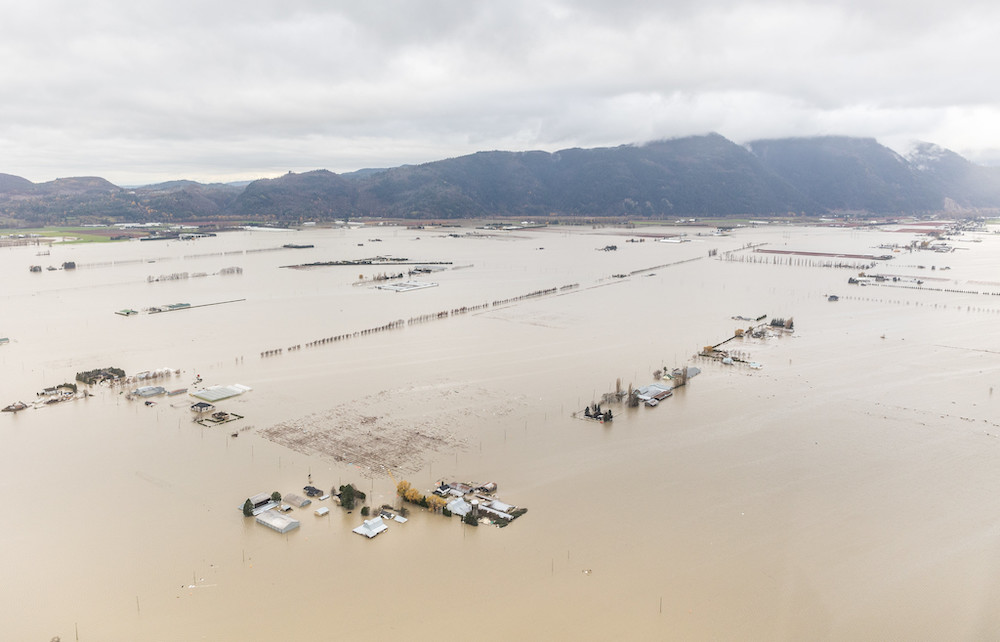Cities are at the centre of Canada’s five-year, C$1.6-billion climate adaptation and resilience strategy, with Ottawa looking to local governments to deliver supports to Canadians increasingly facing the threat of wildfires, heat waves, and catastrophic storms and flooding.
The government’s National Adaptation Strategy “signals meaningful progress toward a whole-of-Canada approach to climate mitigation and adaptation,” the Federation of Canadian Municipalities (FCM) said in a release last Thursday, welcoming a federal plan that was two years in the making. “The announcement included a significant investment in the Green Municipal Fund (GMF) to support, accelerate, and scale up community-based climate adaptation initiatives.”
The strategy was also well received by Canada’s property and casualty insurance industry, which held seats on two of the five advisory committees that developed the plan. The Insurance Bureau of Canada hailed the initiative as “brave” and “ambitious,” reports Canadian Underwriter.
The strategy envisions a country prepared to deal with the worst impacts of climate change, reports CBC News. While it talks about multiple targets, it doesn’t provide any hard numbers. The government says more detailed implementation plans will be rolled out later.
The bulk of the adaptation funding goes to support for communities, including $530 million for the GMF and a $491-million top-up for the government’s existing Disaster Mitigation and Adaptation Fund (DMAF). Other budget lines include $164 million to improve Canadians’ access to flood mapping, $30 million to protect against extreme heat, $41 million for a pilot program to improve resilience in northern and coastal communities, and $70 million for a national science assessment to improve climate data.
“Just in the last few years, communities across the country have seen first-hand the devastating impacts of extreme weather events,” said Infrastructure and Communities Minister Dominic LeBlanc. “We know these events are only going to intensify,” he added, making the adaptation strategy “a key tool” guiding investments to protect Canadians from climate impacts.
But so far, the funding package is insufficient to offset the costs Canadians will pay to deal with the expected impacts of climate change, even after grouping it with $8 billion Ottawa has already earmarked for climate adaptation, the Globe and Mail’s Adam Radwanksi reports. The Canadian Climate Institute anticipates the Canadian economy will see $25 billion in losses from climate impacts by 2025—and $78 to $101 billion per year by 2050, depending on future greenhouse gas emissions—with individual households sustaining the bulk of those losses.
The government is describing last week’s announcement as a “down payment,” suggesting more funding will be mobilized for adaptation in the future. “Clearly, there will need to be significant investments by all orders of governments and all Canadians across the country,” Emergency Preparedness Minister Bill Blair told media.
In addition to the funding, the adaptation strategy includes high-level policy goals and a proposal to harmonize federal, provincial, and territorial adaptation priorities. The federal government is casting the strategy as a “whole of society blueprint” that addresses five key aspects of resilience-building—disaster response, infrastructure, nature and biodiversity, health, and the economy.
The policy goals are broadly stated, without clear benchmarks for accountability—though an annex to the plan proposes explicit targets that may drive government action.
Still, the strategy “marks more progress than some had feared, after a troubled development process in which the government struggled to give adaptation the focus it deserves,” the Radwanski writes.
This article was reprinted from The Energy Mix. You can read the original article here.







